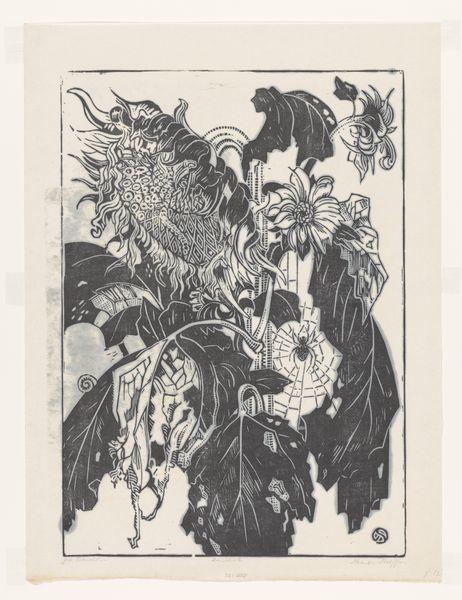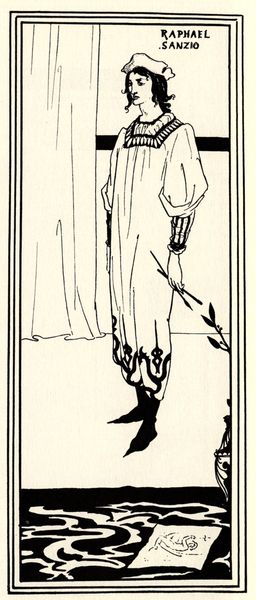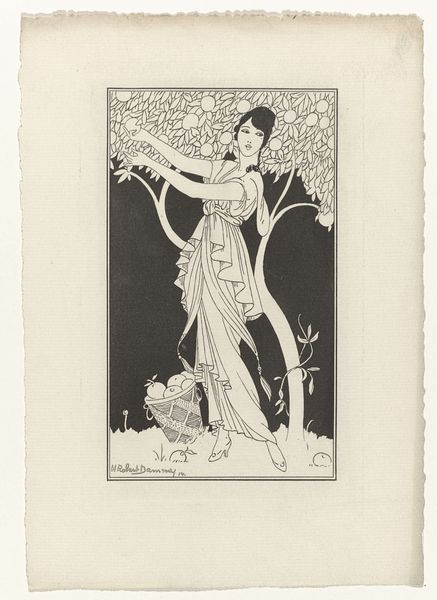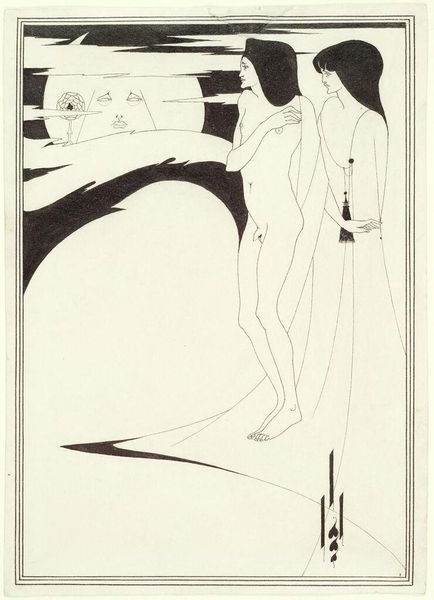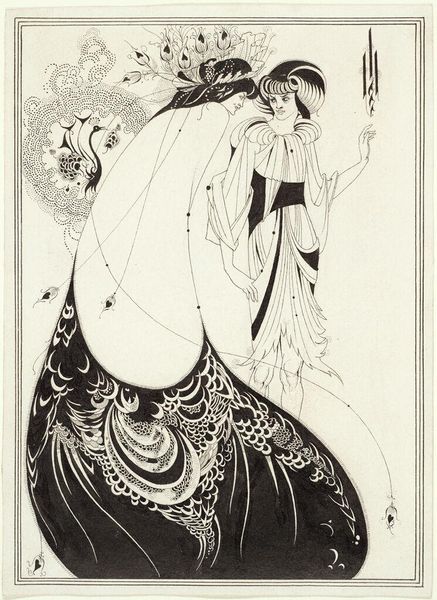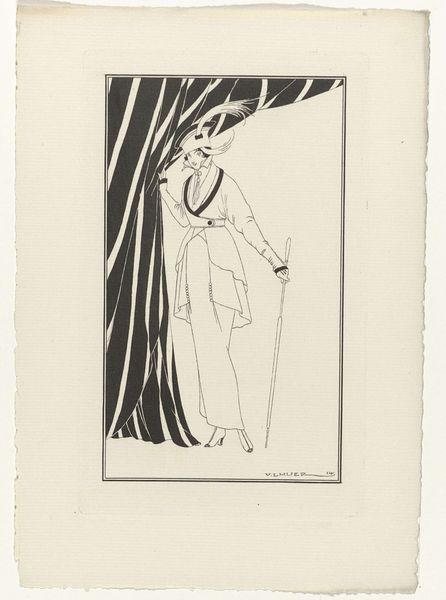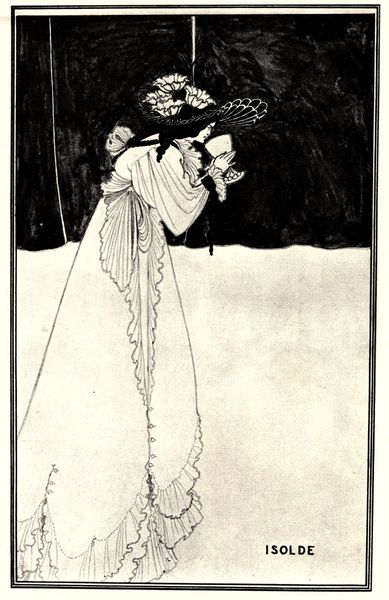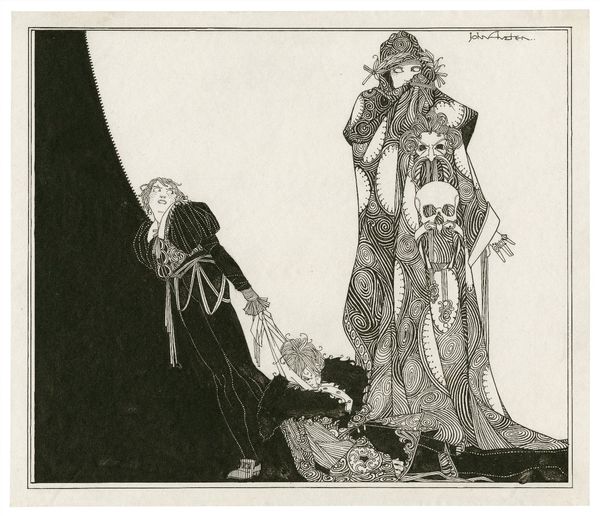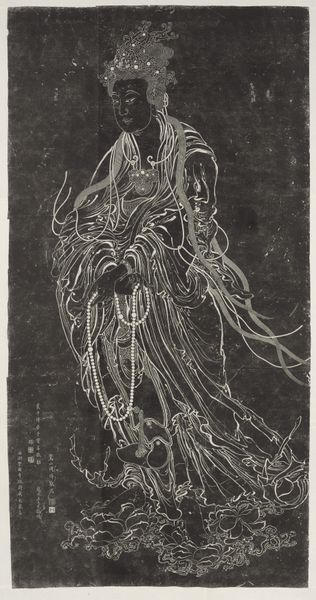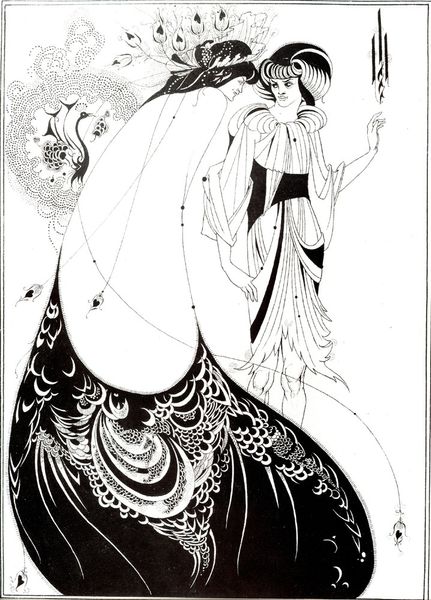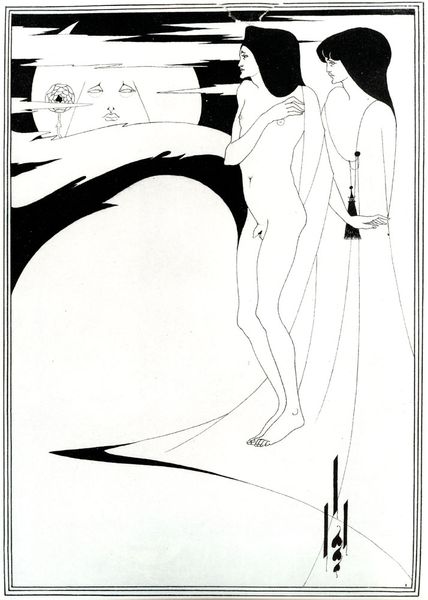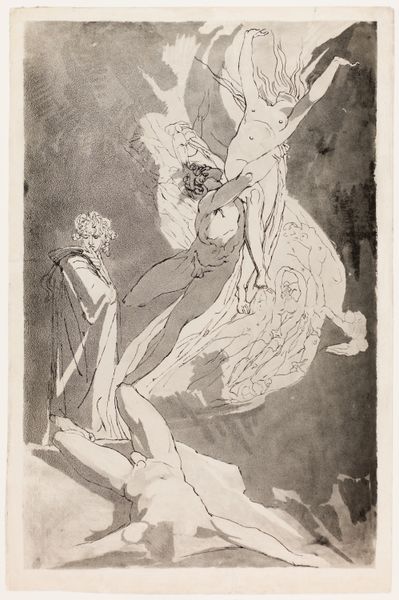
drawing, ink
#
portrait
#
drawing
#
figuration
#
form
#
ink
#
line
#
symbolism
Copyright: Public domain
John Austen's 'Hamlet' renders Shakespeare's iconic character through the stark contrast of black ink on white paper, enclosed within a decorative circular frame. The eye is immediately drawn to the dramatic costume of Hamlet, patterned with bold, crescent shapes, that dominates the composition. This stylized approach, typical of Austen’s era, flattens the figure, emphasizing surface pattern over depth. The swirling smoke from the candle and the ornamental details within the circle introduce a sense of unease, playing with semiotic codes of melancholy and the supernatural often associated with Hamlet. Austen uses line not merely to define form but as a graphic element, contributing to the overall design rather than realistic representation. The tension between the representational and the decorative destabilizes traditional notions of portraiture. In doing so, Austen invites us to consider the character of Hamlet not just as a literary figure but as a construction of visual and cultural signs. This allows Austen to engage with broader aesthetic and philosophical debates about the nature of identity and representation.
Comments
No comments
Be the first to comment and join the conversation on the ultimate creative platform.
